Example Test
A Test Walkthrough
Let's go through a complete example test.
Before you start
Make sure you have installed the QExE tool on your machine following the download information.
Max Controller
- Open the MaxMSP Controller project.
- From source project download:
./MaxController/src/patcher/main.maxpat - From the build download:
./MaxController/QExE.exe
- From source project download:
- Ensure you have no error messages on the console menu. If you any errors, take a look at the troubleshooting Section.
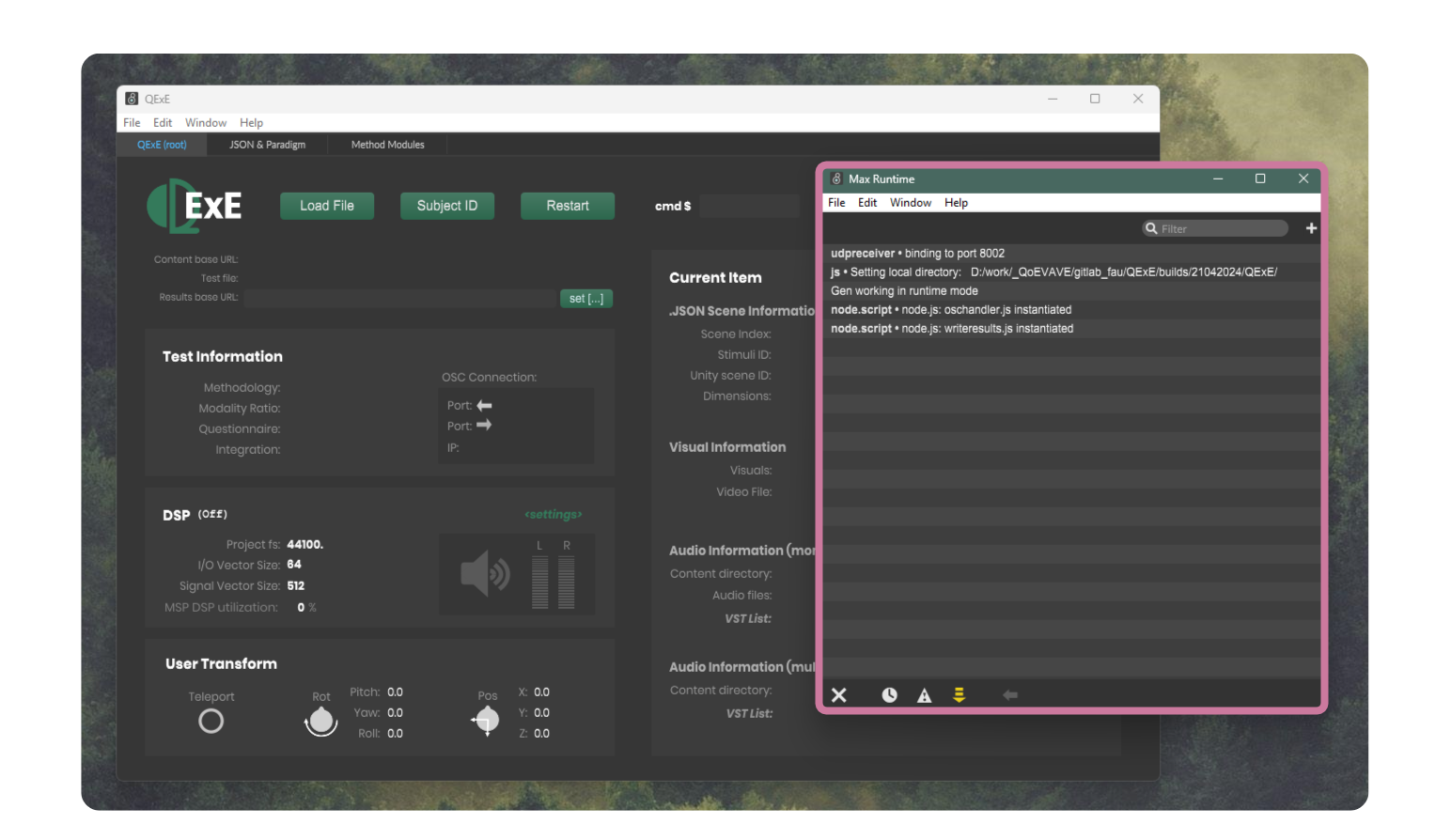
- Click 'Load File', and navigate to the
testfilesdirectory, and open the InteractionDemoConfig.json.- You can check the console window again to see the import print out of the config file.
- If you have any error message here, it is likely that the files (VSTs) cannot be located.
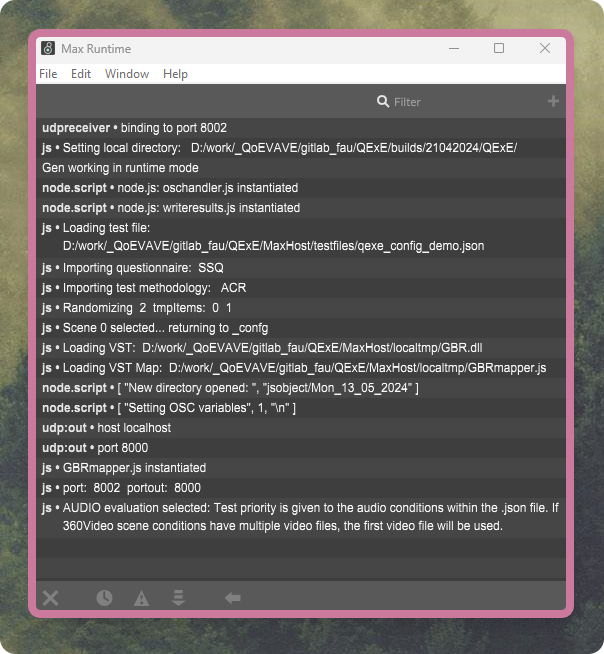
- Set your Results Directory.
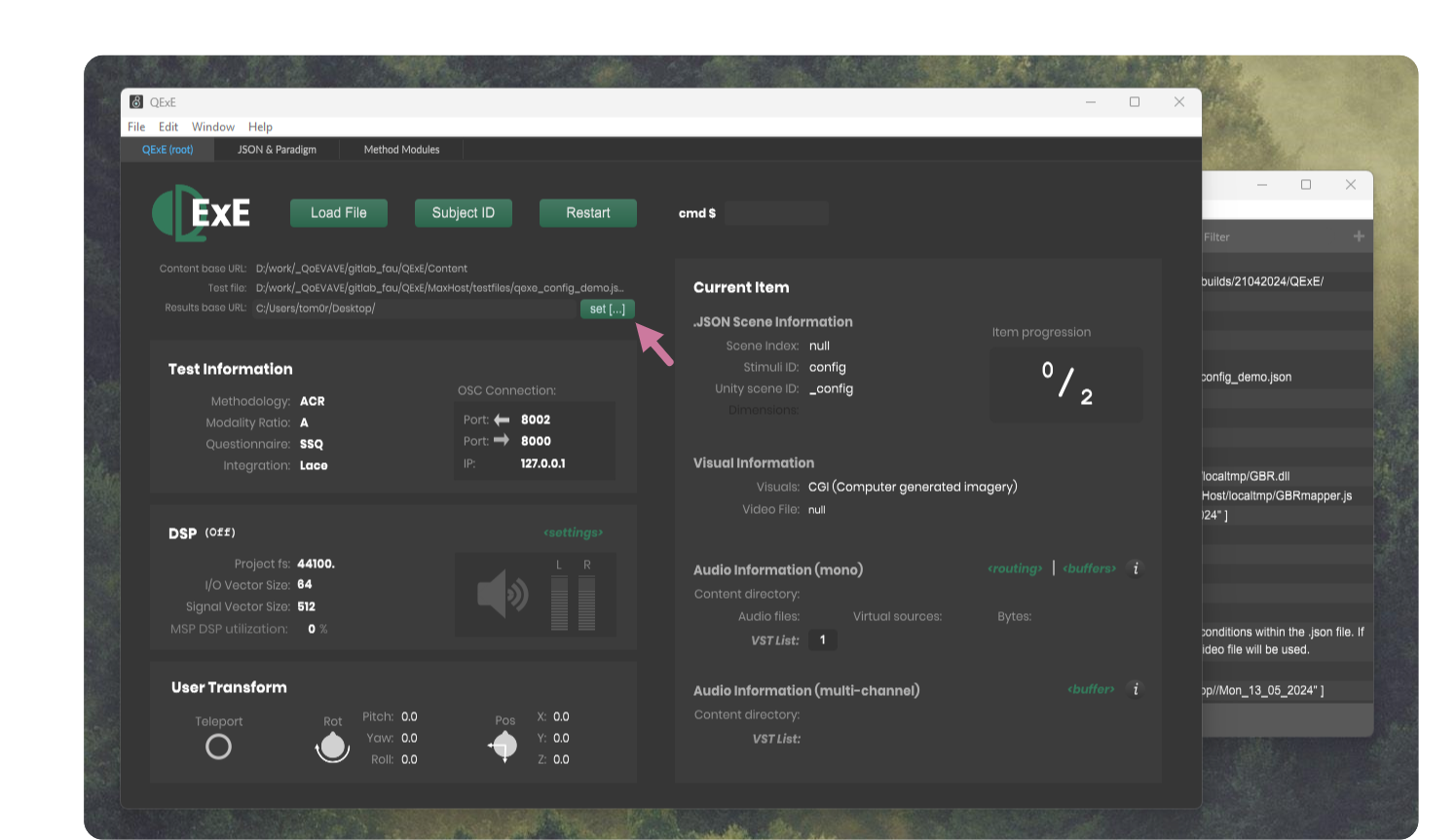
- Under the "Current Item > Audio Information" you can configure any object-based or multi-channel audio rendering VSTs that you have loaded.
- Turn on DSP.
- Once you click the loudspeaker symbol, you will see the DSP utilization start to flicker around 1-3%
- You can alter your buffer size and I/O drivers by clicking on the <settings> text.
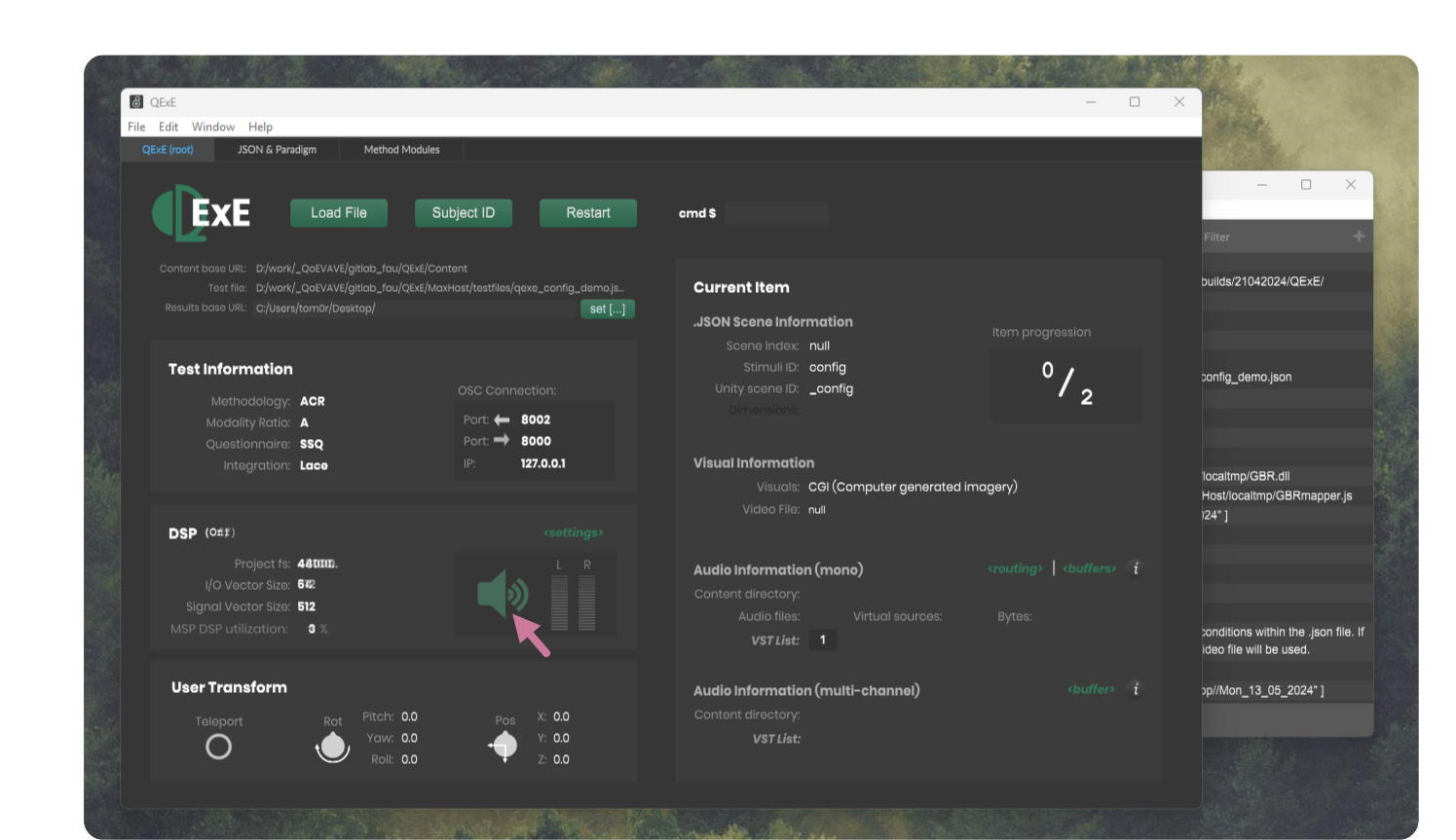
Unity Agent
- Open the Unity project via your Unity hub.
- Open the
_configscene and press the Unity "Play" icon.
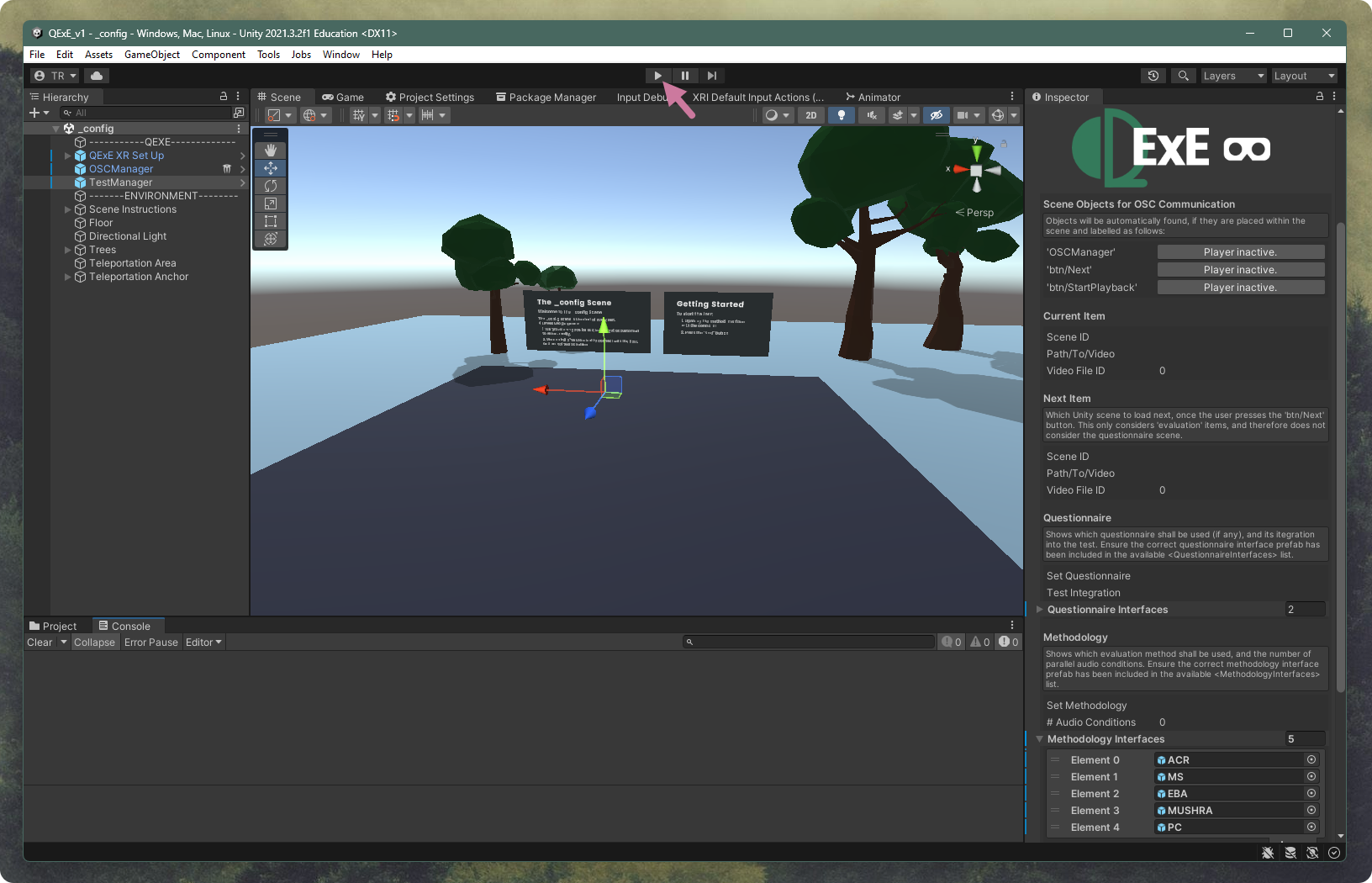
- Test has started.
- The Max Controller and Unity Agent will begin to communicate and the remainder of the test will be controlled through the subject in VR.
- You can view the communication either in the Max or Unity console window. In the example below, you can see that Unity has imported the correct method to the scene, and found the mandatory UI elements for communication.
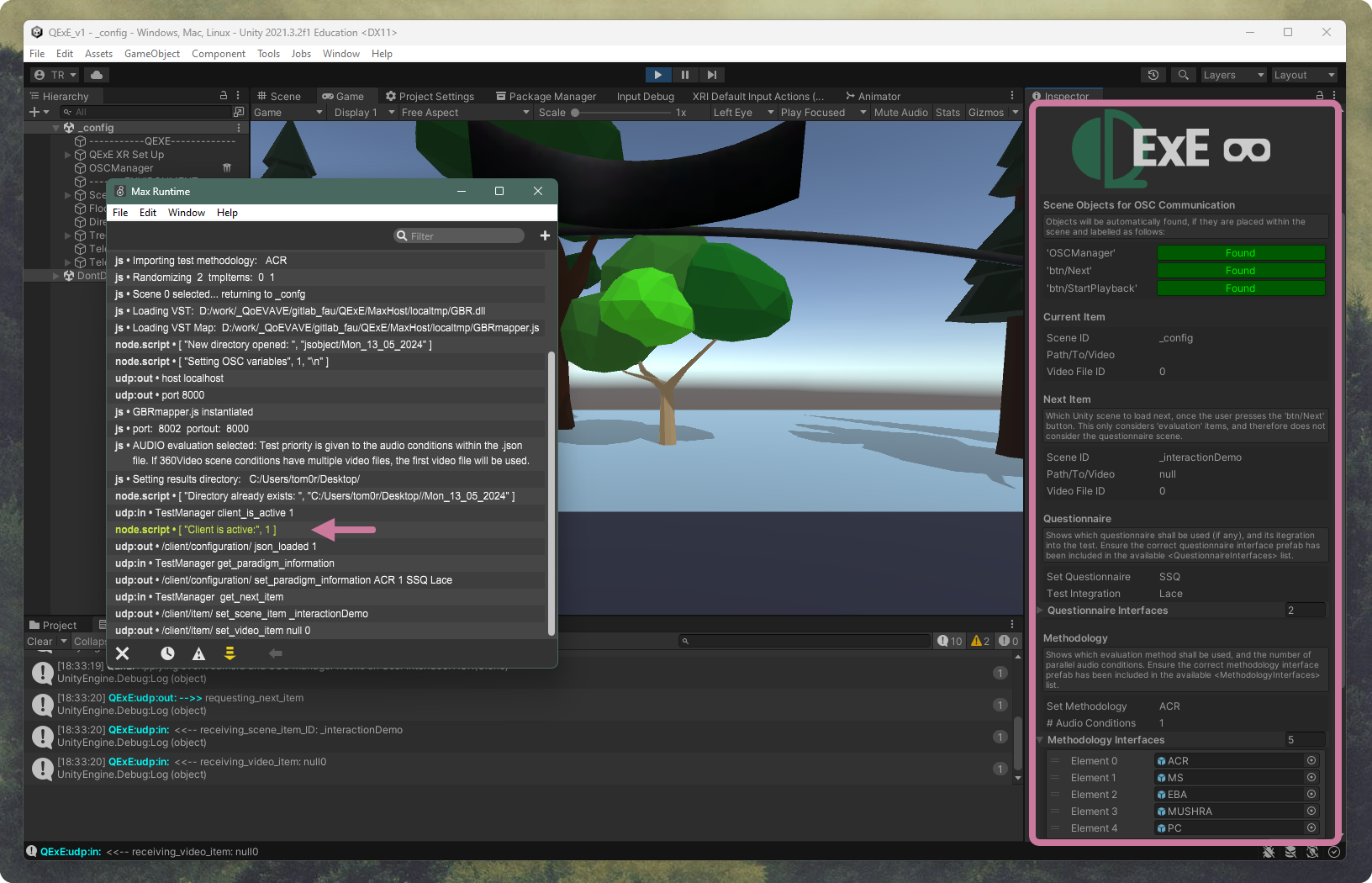
Sequence Diagram
The following diagram shows the initial setup for a test, followed by the two loops:
- The Admin loop, is repeated per subject.
- The Subject loop, is each subject performing their assigned task for each evalution item.